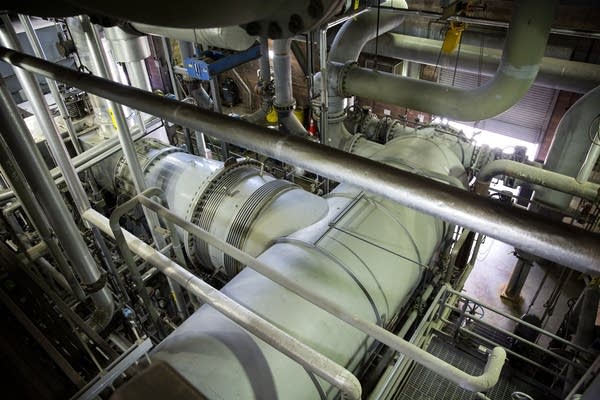District energy seen as tool in energy transition

The steam powered turbine at District Energy in St. Paul generates up to 37 megawatts of electricity a day, spinning at 100 revolutions per second.
Evan Frost | MPR News
Go Deeper.
Create an account or log in to save stories.
Like this?
Thanks for liking this story! We have added it to a list of your favorite stories.


